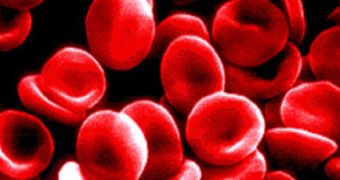Cloning poses a huge ethic debate. That's why scientists have been focusing on various sources for getting stem cells, necessary for technologies of organ replacing. We have witnessed tests made on stem cells coming from skin, fatty tissue, bones, testicles, and now, from an unsuspected source: menstrual blood!
The thickened womb wall during a woman's menstrual cycle has been found to comprise stem cells, as mentioned in the study led by Dr. Xiaolong Meng of the Bio-Communications Research Institute in Wichita, Kansas, and published in the online open access publication, Journal of Translational Medicine.
The team made of researchers from the University of Alberta, University of Western Ontario and Medistem Laboratories isolated a novel type of stem cell from menstrual blood coming from healthy women. "We have many problems with our current methods of stem cell therapy, like those taken from bone marrow. They may be rejected by the recipient and/or have limited potential to generate new tissue. Now we've found a possible new way to overcome these difficulties by using cells from menstrual blood.", said Meng.
During the uterine phase of the menstrual cycle, the pre-existing blood vessels have to grow new blood vessels. The stem cells coming from the menstrual blood can reproduce almost 70 times faster than stem cells coming from the umbilical cord blood and bone marrow.
The team could achieve from them at least 9 mature cell types including heart, liver and lung. These Endometrial Regenerative Cells (ERC) divided at a rapid rhythm of onces almost every 20 hours, releasing specific growth factors at 100,000 higher levels than umbilical cord blood stem cells did.
Just 5 ml of menstrual blood collected could deliver in 2 weeks beating heart cells. In the end, menstrual blood could save females' lives, mainly because this source of stem cells works much faster than the cells taken from bone marrow and umbilical cord blood do.

 14 DAY TRIAL //
14 DAY TRIAL //